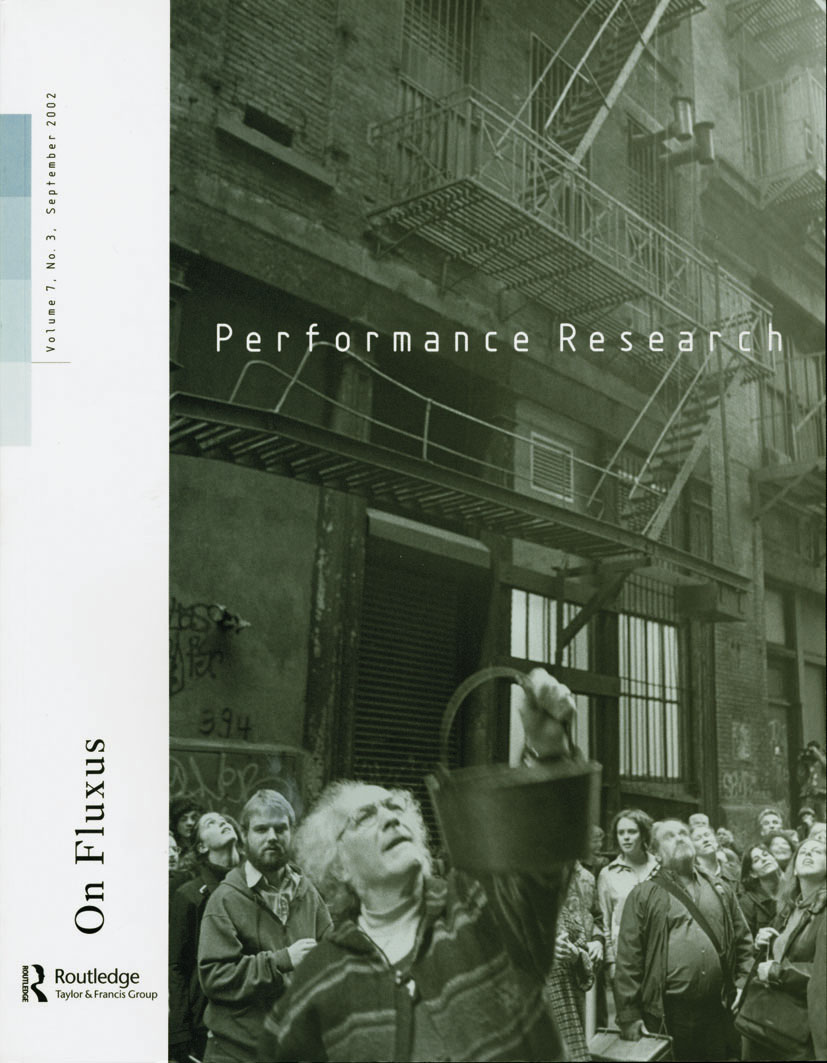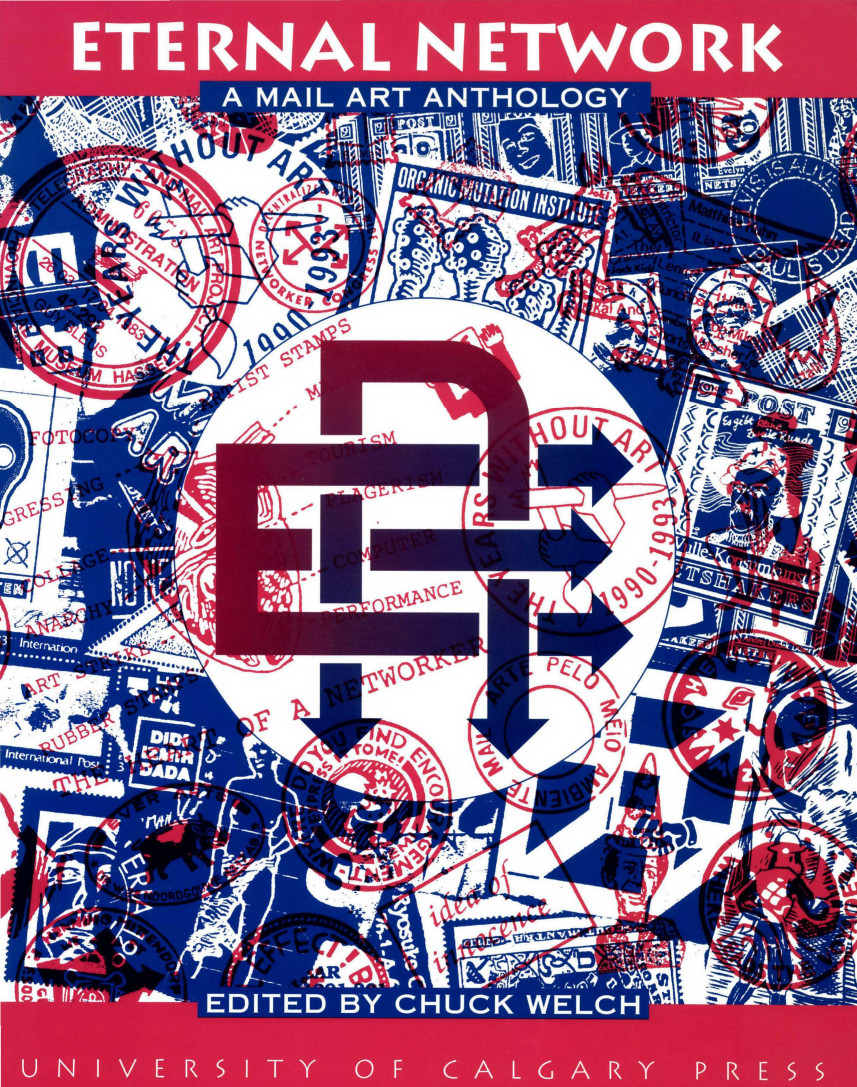Performance Research 7(3): On Fluxus (2002)
Filed under journal | Tags: · art history, fluxus, intermedia, performance

“To mark the 40th anniversary of the first Fluxus festival in Wiesbaden, Germany, and the 30th anniversary of Fluxshoe which toured England with a series of performances, concerts, and exhibitions (1972–3), ‘On Fluxus’ continues the volume theme of ‘textualities, scores and documents’ and focuses on the relationship of writing and textuality to Fluxus. Fluxus was an international community of artists, architects, designers, and composers described as ‘the most radical and experimental art movement of the 1960s’. As a laboratory of experimental art, Fluxus was the first locus of intermedia, concept art, events, and video, and a central influence on performance art, arte povera, and mail art.”
Issue editors: Ric Allsopp, Ken Friedman & Owen Smith
Publisher Routledge, September 2002
ISSN 1352-8165
142 pages
PDF (38 MB)
Comment (0)De Ridder Retrospective (1983) [NL/EN]
Filed under artist publishing, catalogue | Tags: · art, fluxus, performance, radio art, theatre

Book with comic strips, conversations and a chronology of Dutch radio art maker, magazine editor and Fluxus member Willem de Ridder, issued to accompany his retrospective at the Groningen Museum in the Summer of 1983. The part in English starts on page 34.
“In 1961, Willem de Ridder set up Mood Engineering Society together with Peter Schat, Wim T. Schippers, Misha Mengelberg, Jaap Spek, Louis Andriessen and Govert Jurriaanse, most of them avant-garde musicians. Among their first activities was De Ridder’s Papieren konstellaties [Paper Constellations], which could be ‘constructed’ anywhere as long as an audience was present to participate in this so-called PK theatre and help determine its appearance. Traditional theatre, it was felt, had to be given the boot. It had remained stuck too long in the renaissance model of the proscenium stage and should be replaced by dynamic, mobile installations, variable acoustics and–following John Cage–the theatricality of silence, which, it was anticipated, would make the audience restless. The group performed three concerts in February 1962. Fully in the spirit of Fluxus, the hierarchy between artist/composer and performer as well as between performer and audience was abolished. Objects fulfilling a clearly visual function, such as a tape recorder, were featured in the concerts. The introduction of a visual element suited the ambition to destroy the traditional boundaries between the disciplines of art, following Cage’s example. After the concerts, MES was dissolved, despite the fact that various museums in the country were offering them the opportunity to put on new performances. De Ridder became a representative of Fluxus for the Netherlands in 1963.” (Marga van Mechelen, 2006)
Written and compiled by William Levy and Willem de Ridder
Publisher Groninger Museum, Groningen, 1983
ISBN 906477062X, 9789064770623
80 pages
via thepiratebay.worm.org
PDF (33 MB)
Comment (0)Chuck Welch (ed.): Eternal Network: A Mail Art Anthology (1995)
Filed under book | Tags: · art, art history, artists book, computer art, dada, fluxus, internet, mail art, network art, networks, visual poetry, zine culture

“This book is the first university press publication in academia to explore the historical roots, aesthetics and new directions in mail art. The essays of Eternal Network were written and assembled during the early 1990s by mail artist, writer, and curator, Chuck Welch. The edition contains forty illustrated chapters surveying an international community whose mailboxes and computers were a proto internet bridging the analog and digital world of art and communication. Eternal Network includes numerous photographs of mailed artifacts, performance events, congresses, stampsheets, posters, collages, artists’ books, visual poetry, computer art, mail art projects, zines, copy art and rubber-stamped images.
The book is divided into six parts: Networking Origins, Open Aesthetics, New Directions, Interconnection of Worlds, Communication Issues and Ethereal Realms. Appendixes include mailing addresses from the 1990s, mail art exhibitions, a listing and location of over 350 underground mail art magazines and a comprehensive record of public and private international mail art archives. The late Judith Hoffberg, founder of Art Libraries Society of North America (ARLIS) and editor of Umbrella Magazine, wrote an astute and prophetic review of Eternal Network in March 1995. “Some might think that this is the last gasp of a paper-orientated group of artists, but it is more a testament to the future of alternative art and the role of artists as networker”.”
With a Foreword by Ken Friedman
Publisher University of Calgary Press, Calgary, 1995
ISBN 1895176271, 9781895176278
xxiii+304 pages
via Chuck Welch, (2)
PDF (147 MB)
Comments (2)
